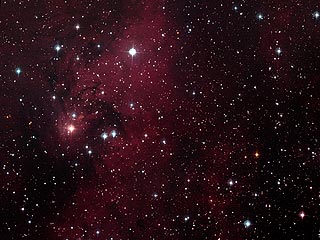 |
|
|
|
 |
 |
A frequently updated and diverse selection of inspiring and beautiful animations and video clips to stream and download.
To see selections click on the Multi Media subjects in the left column - and then click on the small images there. After the one you selected appears in a larger size in the right column click on the "Play" button.
|
 <
<
|
|
|
|
|
|
Observations from NASA's Spitzer Space Telescope reveal a turbulent nest of giant newborn stars too shrouded in dust to be seen with visible light. This movie highlights this stellar nursery, called DR21, and illustrates what a human eye might see if it could be re-tuned to see different parts of the electromagnetic spectrum. It shows the area surrounding DR21 in shifting wavelengths of light, beginning with the visible and ending with the new Spitzer infrared observations. The view changes in hue from red to blue, then fades from sight, as new infrared features appear in false-colors. The first false-color infrared view is from the near-infrared Two Micron All Sky Survey (2MASS) at wavelengths of 1.3 to 2.2 microns. The second false-color view is from Spitzer's mid-infared InfraRed Array Camera (IRAC) at wavelengths of 3.6 to 8 microns.
The picture at the start of the animation encompasses the entire region observed by the Spitzer Space Telescope. The faint emission from hot gas, which appears red initially in the visible view, shifts toward blue and out of sight as the near-infrared features start to emerge. A multitude of new stars shifts into view in the near-infrared view. Then, several faint, dark reddish smudges appear throughout this field, hinting at the presence of more deeply buried nebula. Finally as the movie shifts to longer Spitzer wavelengths, these denser embedded dust clouds burst fully into view, revealing the more extensive network of newborn stars that was utterly absent in visible light.
The shift from visible to infrared light is then repeated for a zoomed-in view of the central DR21 complex. With this magnification, the stellar nursery of massive stars is much clearer. In the final Spitzer view, red filaments trace the presence of complex hydrocarbon molecules. The green jet of gas at the bottom of the region reveals an outflow of material from a massive star over 100,000 times as bright as our own Sun.
|
|